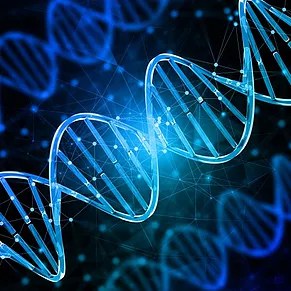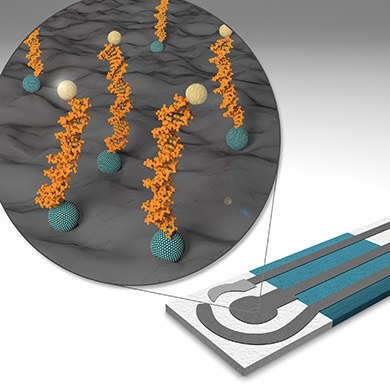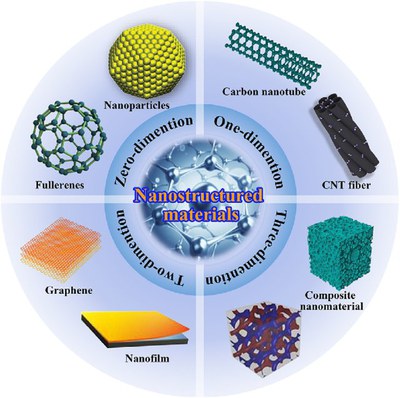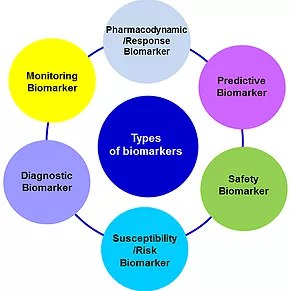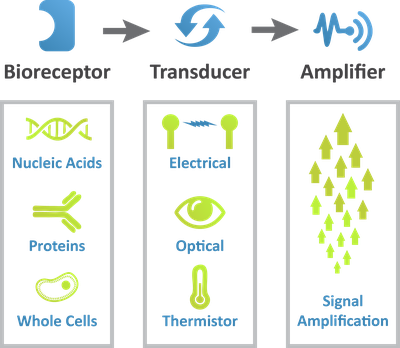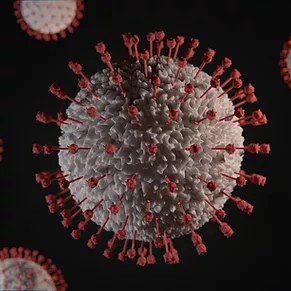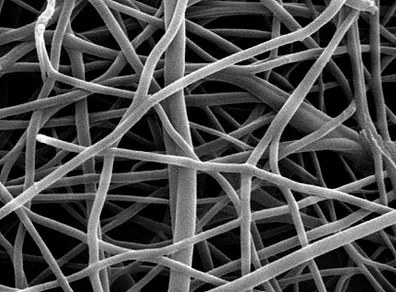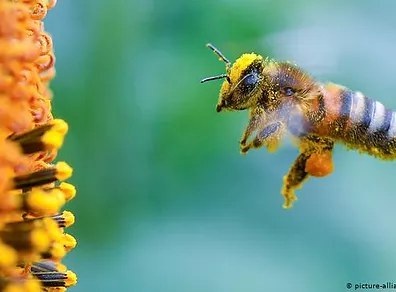Research
3D PRINTING FOR THE MANUFACTURE OF (BIO)SENSORS
3D printing has been an important tool for producing analytical devices. Furthermore, neurodegenerative diseases have plagued society for decades. In this context, an active stance is necessary on the part of those who generate scientific and technological knowledge to propose new strategies for controlling and treating diseases. Aware of this, this team is willing to apply its specialized knowledge in materials science, electrochemistry, and analytical chemistry to the development of low-cost sensors and biosensors that are easy to manufacture and capable of being scaled up for large-scale production, aiming at the detection of biomarkers. related to neurodegenerative diseases. To achieve these goals, innovative 3D printing technology will be explored with the use of conductive and non-conductive filaments to manufacture electrochemical systems suitable for working with small sample volumes (ideal for clinical applications in biofluids) and direct application in the field via coupling with portable equipment. In addition to the design of new 3D printed electrochemical detection systems, this research project proposes to establish manufacturing processes and treatments for conductive filaments, containing a higher content of conductive carbonaceous matrix and, consequently, contributing to the production of devices that can become patents. Thus, the transfer of technology developed to the production and clinical sector will generate new devices and methods for diagnosing the diseases in question.
CNPq grant number 401977/2023-4
DEVELOPMENT OF MULTIPLEX ELECTROCHEMICAL SYSTEMS APPLIED TO DETECT BIOMARKERS RELATED TO CARDIOVASCULAR DISEASES
Multiplex electrochemical systems are technologies that allow the simultaneous detection of several biomarkers in a single biological sample, such as blood or urine, or the determination of the same compound with several electrodes, providing high data reproduction. In these systems, several electrodes can be prepared that can react in a specific way with the different biomarkers present in a specific sample, producing an electrochemical signal that can be measured and quantified. Biomarkers are substances that indicate the presence or progression of a disease. They can be proteins, enzymes, lipids, nucleic acids, or metabolites, among others. The early and accurate detection of these biomarkers is essential for the diagnosis, prognosis, and monitoring of various diseases, including cardiovascular diseases. Cardiovascular diseases are illnesses that affect the heart and blood vessels, such as atherosclerosis, high blood pressure, acute myocardial infarction, arrhythmias, and heart failure. The detection of specific biomarkers for these diseases can help in the early identification of symptoms, differential diagnosis, and monitoring of treatment effectiveness. Therefore, the development of multiplex electrochemical systems for the detection of biomarkers related to cardiovascular diseases represents an important tool in diagnostic medicine, which can contribute to the prevention, treatment, and control of these diseases. In this context, the present project aims to develop screen-printed and 3D platforms for multiplex systems, with up to 8 working electrodes for the detection of different analytes related to cardiovascular problems.
FAPESP grant number: 2023/06793-4
DISPOSABLE BIOSENSORS PRODUCED BY SCREEN PRINTING AND 3D PRINTING FOR THE DETECTION OF NEURODEGENERATIVE DISEASES
Nowadays, neurodegenerative diseases plague humanity. Having their first symptoms, mainly after adulthood, they cause degradation of the motor and nervous systems, in a way that is still incurable today. In this context, detection and monitoring are interesting for maintaining the patient's quality of life. This Productivity and Research Grant application project aims to produce disposable platforms obtained by sensors with carbon conductive inks; and with three-dimensional printing, using conductive carbon filaments. New conductive inks will be produced from nanomaterials such as carbon black and carbon nanotubes, which will be deposited on low-cost surfaces such as paper and Polyethylene terephthalate (PET). On the other hand, 3D printing (three-dimensional) or additive manufacturing (AM), has been gaining more and more space in different areas of research, with emphasis on chemistry. The present work aims to obtain conductive filaments based on carbon materials (graphite and/or carbon nanotubes) through extrusion. The filaments will be evaluated regarding the proportion of conductive material to be used, considering the printing capacity of the electrodes. The possibility of designing and producing three-dimensional objects in different shapes with varied compositions is a differentiator, and makes this technique very attractive in analytical chemistry, especially in the area of sensing, enabling the manufacture of apparatus, cells, devices, and electrochemical sensors. Nanoparticles can be used to modify the surface of electrodes, seeking greater interaction between the device and antibody/antigen. Therefore, it is expected to obtain low-cost, sensitive electrochemical biosensors with simple and fast responses.
CNPq grant number: 301796/2022-0
ADVANCED MATERIALS FOR RECOVERY, TREATMENT, AND MONITORING OF THE ENVIRONMENT
In this project the objective is the development and application of advanced materials and strategic minerals for technological innovation, to encourage applied research on the environment, emphasizing the following topics: abatement of polluting gases and greenhouse gases; production of drinking water and treatment of effluents and recycling and recovery of waste. To monitor the quality of these processes, electrochemical sensors based on nanomaterials will be developed. Greater collaboration between academia and industries related to the topic is still expected, with the private sector and the government providing society with a vision for sustainability and improving the environment. stimulate the entrepreneurial capacity of participating researchers and postgraduate students, using advanced materials and strategic minerals.
FINEP grant number: 152/21
BIOSENSORS FOR MEDICAL PURPOSES
The rapid progress of nanomedicine, especially in areas related to medical diagnosis, has motivated the development of new devices that can be combined with biological materials for specific applications. In this research line, nanostructured biosensors are developed for the detection of various diseases, focusing on early diagnosis and improving society's quality of life. Immunosensors have been developed for several diseases such as dengue and hormonal disorders. In addition, DNA sensors (genosensors) have also been developed to detect predisposition to diseases such as some types of cancer and cardiovascular diseases.
NANOSTRUCTURED SENSORS AND BIOSENSORS FOR ENVIRONMENTAL PURPOSES
The phenomenal increase in life expectancy that has taken place in recent decades is related to the development of chemical products. On the other hand, the increase in industrial activities is responsible for the production of a large and worrying amount of residues that, in some cases, are dumped into the environment and that can be responsible for harm to human health and the environment. Aiming at these products, we are developing nanostructured sensors and biosensors for detecting phenols, metallic cations, and pesticides in environmental samples.
DEVELOPMENT OF BIOSENSORS FOR BIOMARKERS DETECTION
New architectures of electrochemical sensors and biosensors provide the possibility of detecting the most different analytes, motivating the improvement of the diagnosis of several diseases. Therefore, disease analyses can be performed quickly, accurately, and reliably. This research project aims to propose new electrochemical sensors and biosensors using disposable platforms intended for point-of-care analysis (POC). Conductive inks will be developed from polymers and conductive carbon materials. As an application form, it is proposed to use these disposable electrodes in the electrochemical detection of several biomarkers, including an immunosensor for β-amyloid 42, a biomarker related to Alzheimer's; an immunosensor for the DJ-1 protein, related to Parkinson's disease; electrochemical sensors for the detection of melatonin, dopamine, and glutathione, also related to Alzheimer's and Parkinson's; biosensors for glucose, aimed at monitoring and detecting diabetes; and the protein interleukin 6, related to a series of diseases. Biosensors for hormonal dysfunctions will also be proposed. The devices introduced here can become patented products that can improve the quality of life of society in general. There will be, in addition to technological gain and biotechnological innovation, the training of undergraduate students from the Chemistry course (Araras campus) and graduate students from the Postgraduate Program of Biotechnology (São Carlos campus) and the Postgraduate Program of Materials Science (Sorocaba campus).
CNPq grant number: 303338/2019-9
GOLD AND PLATINUM NANOSTRUCTURED FLEXIBLE IMMUNOSENSORS FOR COVID-19 DETECTION
This thematic project describes the development of methods for the rapid detection of COVID-19 through low-cost immunosensors that will be constructed on gold and/or platinum thin-film electrodes by the sputtering method and/or low-cost microfluidic devices based on textile yarns.
CAPES grant number: 88887.504861/2020-00
NEW CONDUCTIVE DEVICES FOR APPLICATIONS IN ELECTROCHEMICAL SENSORS AND BIOSENSORS
Electrochemical sensors and biosensors can help the resolution of current issues relatively quickly. The need for new methodologies and improvements in disease detection processes, aiming at accuracy and speed, means that new technologies are developed. Therefore, disease analyses that would take weeks can be carried out in a few hours, with high precision and reliability. Using screen-printing and electrospinning techniques, the aim is to obtain reliable devices that have a low cost. In this context, the purpose of this project is to propose new electrochemical sensors and biosensors using disposable, versatile, and low-cost platforms such as PET and paper. In the first step, conductive inks will be developed from polymers and carbon-conductive materials. In the second moment, electrodes can be prepared using the electrospinning technique. As an application form, it is proposed to use these disposable electrodes in the electrochemical detection of biomarkers related to Alzheimer's and Parkinson's diseases. It is expected to obtain devices with sensitivity, wide linear ranges, stability, low detection limits, and robusticity.
FAPESP grant number: 2017/21898-6
BEE-AGRICULTURE INTERACTIONS: PROSPECTS FOR SUSTAINABLE USE
Bees play a fundamental role in pollination services in natural ecosystems and agroecosystems. However, this indispensable service is under threat, primarily due to deforestation, habitat fragmentation, and loss of natural areas, replaced by Agriculture and Livestock. Furthermore, subsequent activities related to Agriculture in the conventional system, such as the indiscriminate and incorrect use of pesticides, have contributed to the mortality of native and more massively publicized bees of the exotic species Apis mellifera. During the collection of food resources (pollen, nectar, floral oils, resins) bees come into contact with pesticides. Whether directly or systemically in plants, this contact with pesticides has caused lethal and sublethal effects on honey bees, and little or nothing is known about the effects on social and non-social native bees. Our general objective is to evaluate the effects of different pesticides and their mixtures on Apis mellifera, considered a model species in toxicological studies, and to compare these effects with two species of native social bees, Melipona scutellaris, and Scaptotrigona postica; one parasocial species, Xylocopa frontalis, and two solitary species, Tetrapedia diversipes, and Centris analis.
FAPESP grant number: 2017/21097-3

